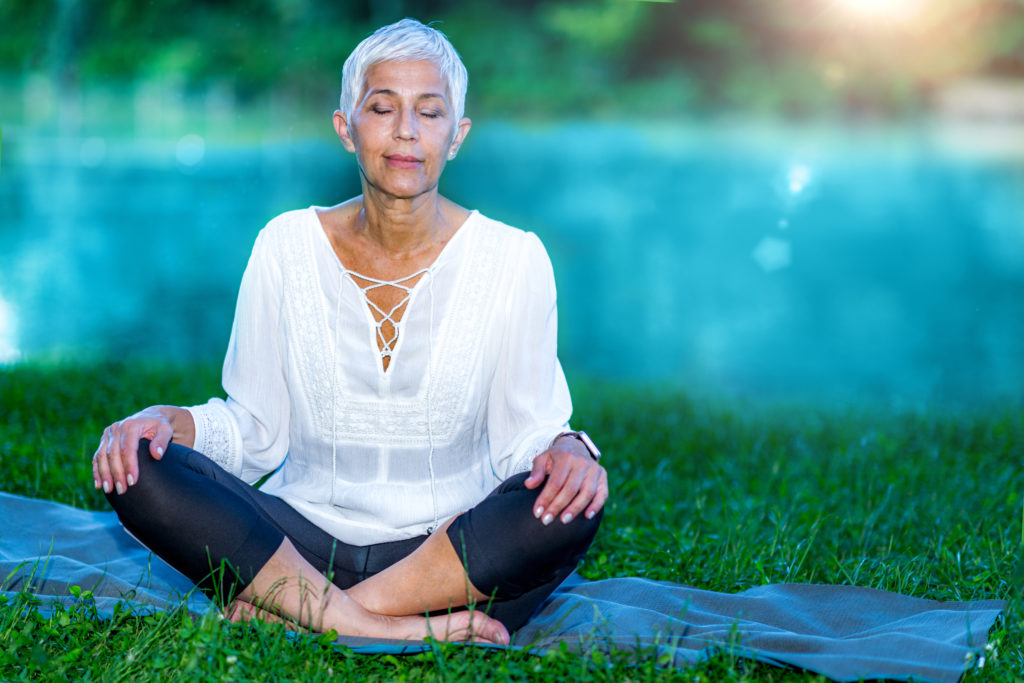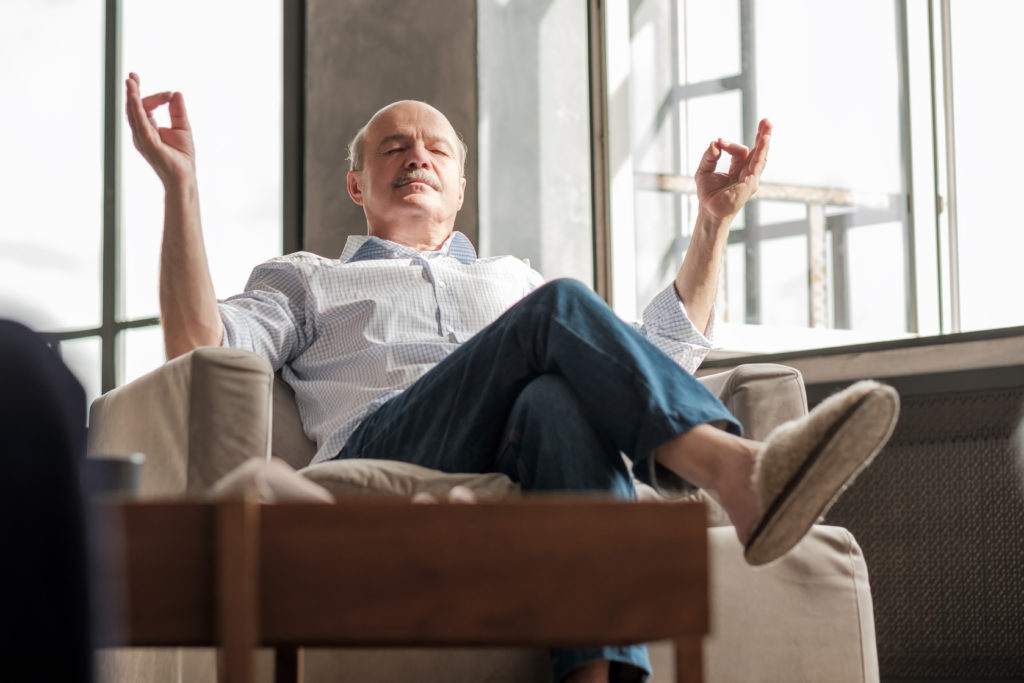Meditation is a millennia-old Eastern mind-body practice that has in recent years been adopted in the West due to its remarkable benefits. One of its greatest benefits is the ability to relieve stress. People, young and old alike, are discovering its powerful properties of cultivating inner peace. As of 2017, around 15% of Americans practice meditation to relieve stress and that number has been rising. In this article, you will learn about just how effective meditation is in reducing both physical and mental stress.
What Is Meditation?
To understand how meditation can help relieve stress, it is a good idea to know what meditation is in the first place. The basic premise involves sitting in a way that ensures your body is relaxed, closing your eyes, and focusing on a single point of focus. Ideally, you will clear your mind of all distracting thoughts that have been stressing you out.
A typical meditation practice lasts anywhere between 5-20 minutes, although you can receive benefits no matter how long you meditate. As with most things in life, the longer you practice, the greater the results will be.
To make meditation as effective as possible, you will need to meditate in a location that has minimal distractions. This will help you maintain focus and clarity. You will also find that it becomes easier to sit and meditate without distracting thoughts over time. If you find yourself becoming distracted by thoughts, don’t worry! It’s completely normal. As time goes on, those thoughts will be less frequent and they will come and go more quickly.

How Meditation Reduces Stress
It is inevitable that you will experience stress throughout your day. Stress is directly related to the fight-or-flight response and is instigated by your mind believing there is something happening that could be dangerous to you. While short periods of this can be helpful, if your body or mind succumb to stress for an extended period of time, you will start seeing health problems arise. Joint pain is one such side effect of experiencing too much stress.
Meditation, on the other hand, will trigger your body’s relaxation response. It will help bring you back to a state of inner peace while promoting healing of your body due to the stress you had. This is why if you are ever feeling exceedingly stressed out, you should sit down and meditate.
If you want to get the most out of meditation to relieve stress, you should aim to set aside at least 10 minutes to meditate. This will ensure you can support your body in repairing the damage that has been done from experiencing prolonged periods of stress.
Best Meditation for Arthritis
If you suffer from arthritis, you will benefit greatly from meditation. Since stress makes joint pain worse, you could find relief from soreness and stiffness thanks to meditation. If you can stick to having a consistent daily practice, you will find the results remarkable.
Given how helpful meditation is to relieve arthritis symptoms, you should consider taking part in meditations for arthritis. Here are some of the major types of meditation you can practice to relieve stress and joint pain:
Mindfulness
Mindfulness is simply being conscious and present. To practice mindfulness, you can either sit in a cross-legged position or perform active meditation. If you choose to sit and close your eyes to practice mindfulness, you can focus on the present moment. Any feelings, thoughts, or sensations that arise can be acknowledged and then let go of. You can also practice active mindfulness by being fully focused on the activity you are doing, such as drinking tea, driving a car, or taking a shower.
Yogic Breathing
Another type of meditation to relieve stress is yogic breathing. This involves getting comfortable while sitting and focusing on your breath. Feel the inhale and exhale melting away your stress. A great way to start practicing yogic breathing is to inhale for four seconds, followed by exhaling for six seconds. Keep doing this for a few minutes. Whenever you find yourself becoming distracted by thoughts, simply bring your awareness back to focus on your breathing.
Visualization
Visualization involves using guided imagery while meditating. This could make it easier to focus because you are imagining a single scene that brings you profound inner calm. This can differ from person to person, but popular visualizations include a tranquil and quiet beach, big fluffy clouds, and other similar peaceful places. Some people find that it helps to listen to a guided meditation, where you are led through a visualization that assists you in the meditation.

Things to Remember
Whichever meditation style you decide to practice, there are a few key things to remember. The first is that you need to stay consistent to see the best results. If you feel it’s too challenging for you to currently meditate for 20 minutes a day every day, then meditate for 5 minutes a day. You want to ensure you can stay motivated to meditate without losing the momentum you built up early on.
You should also avoid being too hard on yourself. It isn’t always easy to avoid having your mind wander or focus on the present moment. In fact, most of the time it’s quite challenging! However, remember that it is alright for your mind to wander off during meditation. The trick is to become aware of when that is happening and bring your focus back to the present moment. Focusing on your breath is an easy way to make sure that happens.
Relieve Stress in Your Body and Mind
With meditation, you get to relieve stress in both your body and mind. If you suffer from arthritis, you will notice impressive improvements after practicing meditation consistently. If you want to see even greater improvements, you can take a joint supplement. JointFuel360 has potent all-natural ingredients like the anti-inflammatory black pepper and turmeric, along with the antioxidant resveratrol. Taking a joint supplement and meditating regularly will practically guarantee that you will notice far less joint soreness and stiffness.
